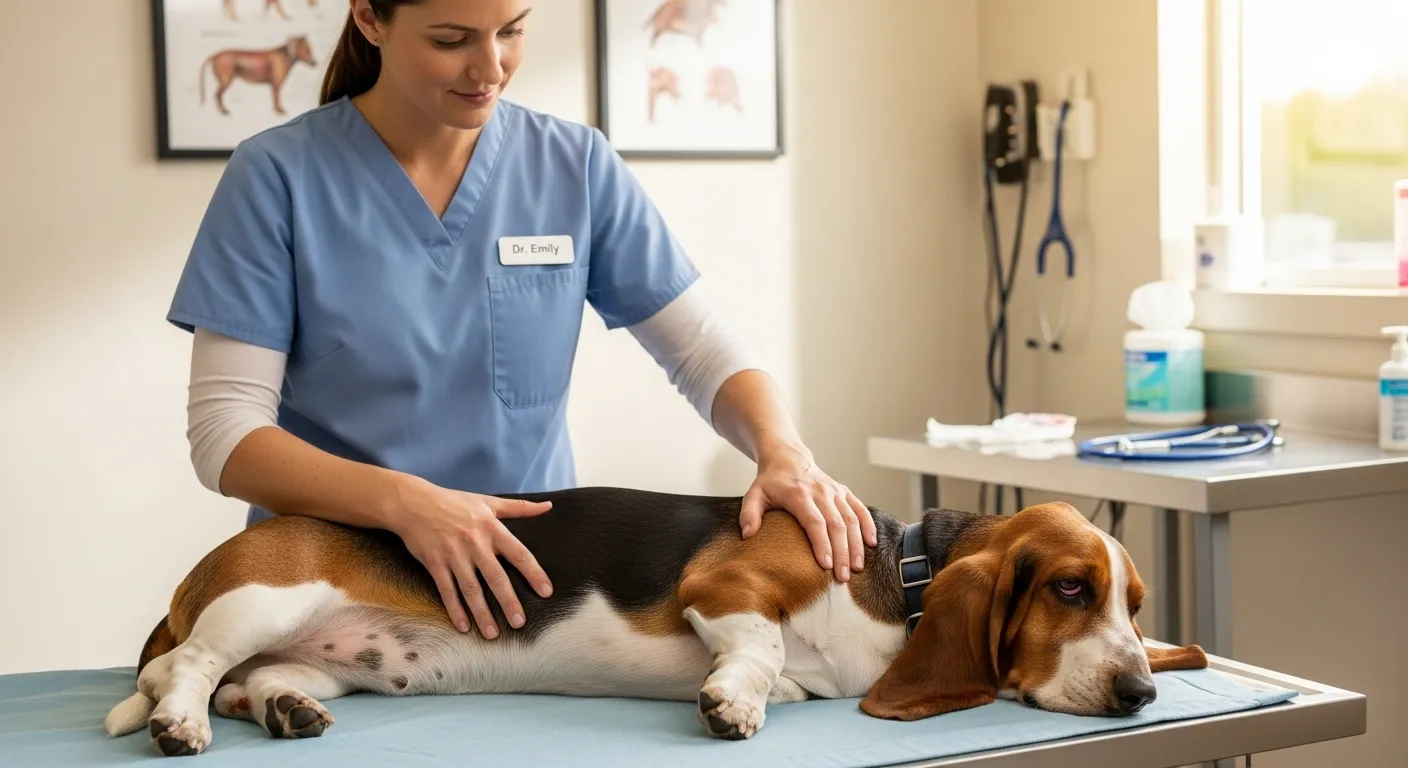
Health and Welfare Considerations for ‘Stubborn’ Breeds
A dog’s physical health is intrinsically linked to its behavior. What might look like stubbornness or laziness can sometimes be a sign of underlying pain or discomfort. It’s crucial for owners of these specialized breeds to be aware of their common health predispositions and prioritize preventive care. A sudden change in behavior, such as reluctance to go on walks, grumpiness when touched, or refusal to perform a known command like “sit,” always warrants a consultation with your veterinarian.
The Basset Hound: A Body Built for a Job
The Basset’s unique anatomy, while perfect for scenting, makes it vulnerable to several health issues.
Weight Management: This is the single most important aspect of Basset Hound care. They are genetically predisposed to obesity, and their soulful eyes are masters at begging for extra food. Excess weight puts catastrophic strain on their long spine and joints. Owners must practice strict portion control. Use a measuring cup for every meal and remember that treats should make up no more than 10% of their total daily calories. Learn to assess their Body Condition Score (BCS), a hands-on method to gauge their ideal weight. You should be able to easily feel their ribs with light pressure, and they should have a visible waistline when viewed from above. Your vet can show you how to do this. For example, a 55-pound (25 kg) Basset might only need about 2.5 cups of a specific brand of dog food per day, split into two meals. Always consult the feeding guide on the bag and adjust for your dog’s individual activity level and metabolism.
Ear Care: Those glorious long ears are a perfect breeding ground for bacteria and yeast because they trap moisture and block airflow. Basset ears need to be checked weekly for any redness, discharge, or foul odor. A gentle cleaning with a vet-approved solution can prevent painful infections that can cause head shaking, scratching, and general misery.
Joint and Spine Health: Their long back and short legs (a form of dwarfism called achondroplasia) make them susceptible to Intervertebral Disc Disease (IVDD), a painful spinal condition. They are also at risk for hip and elbow dysplasia. To protect their back, prevent them from jumping on and off high furniture and use ramps if possible. Maintaining a lean body weight is the best defense against joint problems.
The English Bulldog: Brachycephalic Care
The Bulldog’s charmingly flat face comes with a set of serious health challenges known as Brachycephalic Obstructive Airway Syndrome (BOAS). Their shortened skull means their internal soft tissues are crowded, leading to narrowed nostrils, an elongated soft palate, and a constricted windpipe. This makes breathing difficult and puts them at extreme risk for overheating.
Exercise must always be done in short bursts and never in hot or humid weather. Owners must be vigilant for signs of respiratory distress, which is a medical emergency. These signs include loud, raspy breathing; excessive panting; reluctance to move; and gums or tongue that appear blue or purple. Immediate veterinary care is required in these situations. Their facial skin folds also need to be cleaned daily to prevent painful skin infections.
Preventive Care for All Breeds
Regardless of breed, a foundation of good preventive care is essential. This includes core vaccinations as recommended by your veterinarian (which can vary by region), year-round parasite prevention for fleas, ticks, and heartworm, and regular dental care. Dental disease is not just a cosmetic issue; it can lead to pain and serious systemic health problems. For any concerns about toxins, the ASPCA Animal Poison Control is an essential resource for pet owners.















